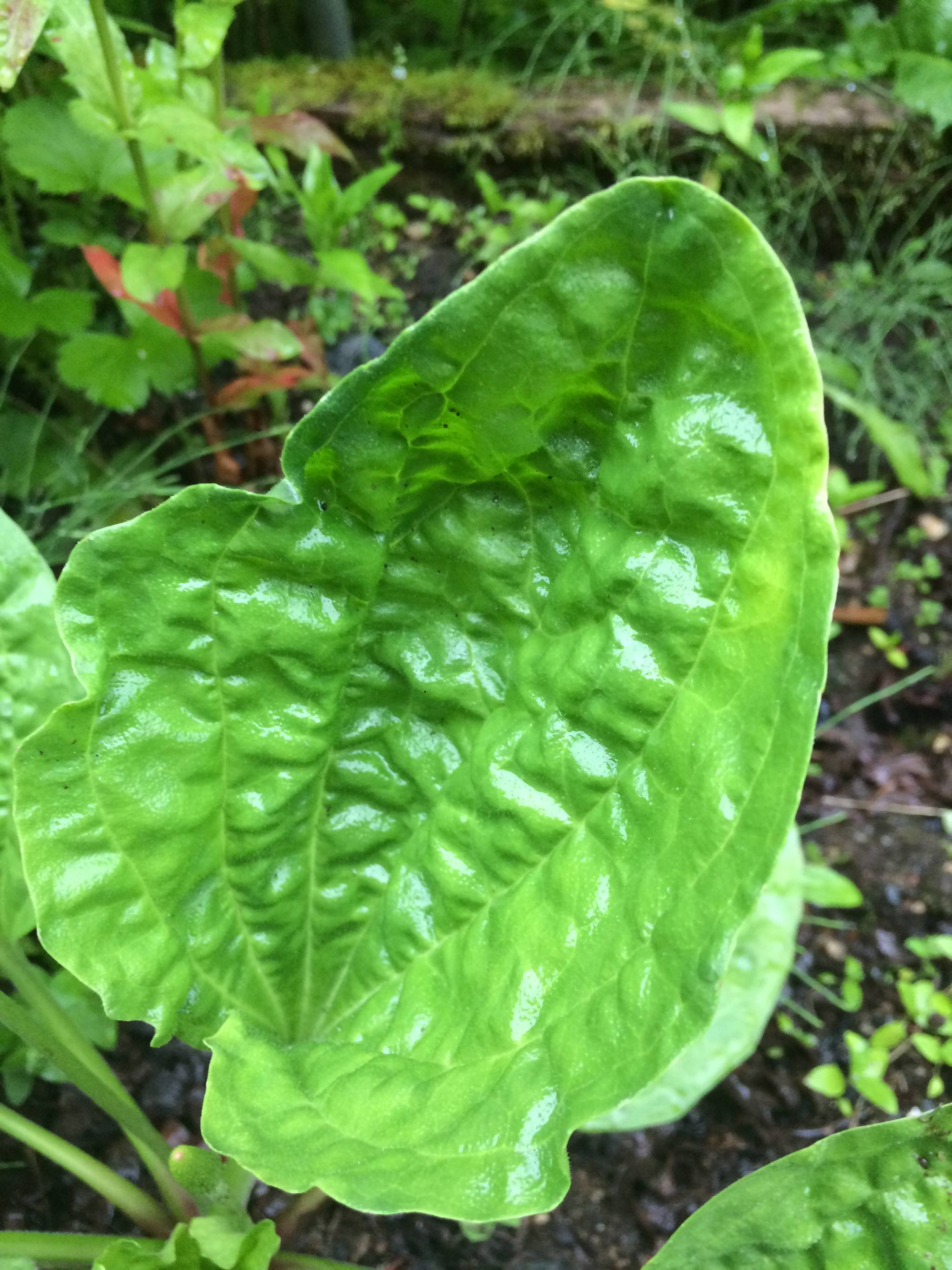Some plants are so commonplace that we fail to see them, even when we are paying attention. I kept hearing about plantains, but I just wasn’t sure what they were. Finally, someone pointed one out to me and now I see them everywhere. They have even popped up in both of my gardens as if it they were kids before a birthday, making sure I don’t miss them.
Like many weeds, they do well in disturbed areas. Plantains are particularly hardy. Even when they are trampled, they are still viable although a bit worn and dirt encrusted.
Plantains, not to be confused with the starchy banana-like plantains, are in the Plantago genus. Of the two hundred species, Plantago major L is the most frequent here in Southeast. It’s recognizable by its broad leaves with crisp lines running the length of the leaf. As the Skagway herbalist, Emily Willis, says, “Veins to the tip, sweet to the lips. Veins to the cut, pain in the butt!” Although, you want to know what you are picking and to be certain what you are eating, this is a good rule of thumb.
These plants form a rosette of leaves near the ground — each one stacked on top of each other clockwise the way rose petals separate as they open. The flowering stalk is the same length as the leaves.
Mid-spring is a fine time to collect and add plantains to salads or other dishes. Plantains are high in calcium as well as vitamins A, C, and K. I like to pick the early leaves, but as they age I use them mostly in egg dishes or hand pies.
As the leaves mature, they become thicker and less palatable. Unlike many wild edibles that become bitter as they age, the plantain retains its flavor. However, it becomes rather chewy and fibrous. You can still throw them in soups, stews or other dishes that you cook, but they are not enjoyable raw.
Use plantain at this stage of growth to treat wounds and bug bites. You can crush the leaves to separate the juices or if you’re feeling like a pioneer, you can chew some up and then place the macerations on your skin. It’s not something I’d normally want to do in a group, but when I’m at the garden and have no-see-um bites that are particularly irritating, I do find that putting the plantain on it soothes and decreases the inflammation. In case you want to treat your bug bites with plantain in a more delicate way, you can make a salve with the leaves.
As the flower stalk develops seeds, you can harvest them. Touted as a flour enhancer, you’d have to work hard to end up with enough to make a difference with your regular baking supply. However, these seeds can add a nice bit of texture and crunch.
Although it’s not anyone’s preference for their favorite wild edible, it is worthwhile to pay attention to this particular plant for its multiple uses. Look around and soon you’ll detect these broad-leafed plants. Soon, you’ll see them everywhere.
• Corinne Conlon’s column Gathering Alaska appears in the Capital City Weekly seasonally.

